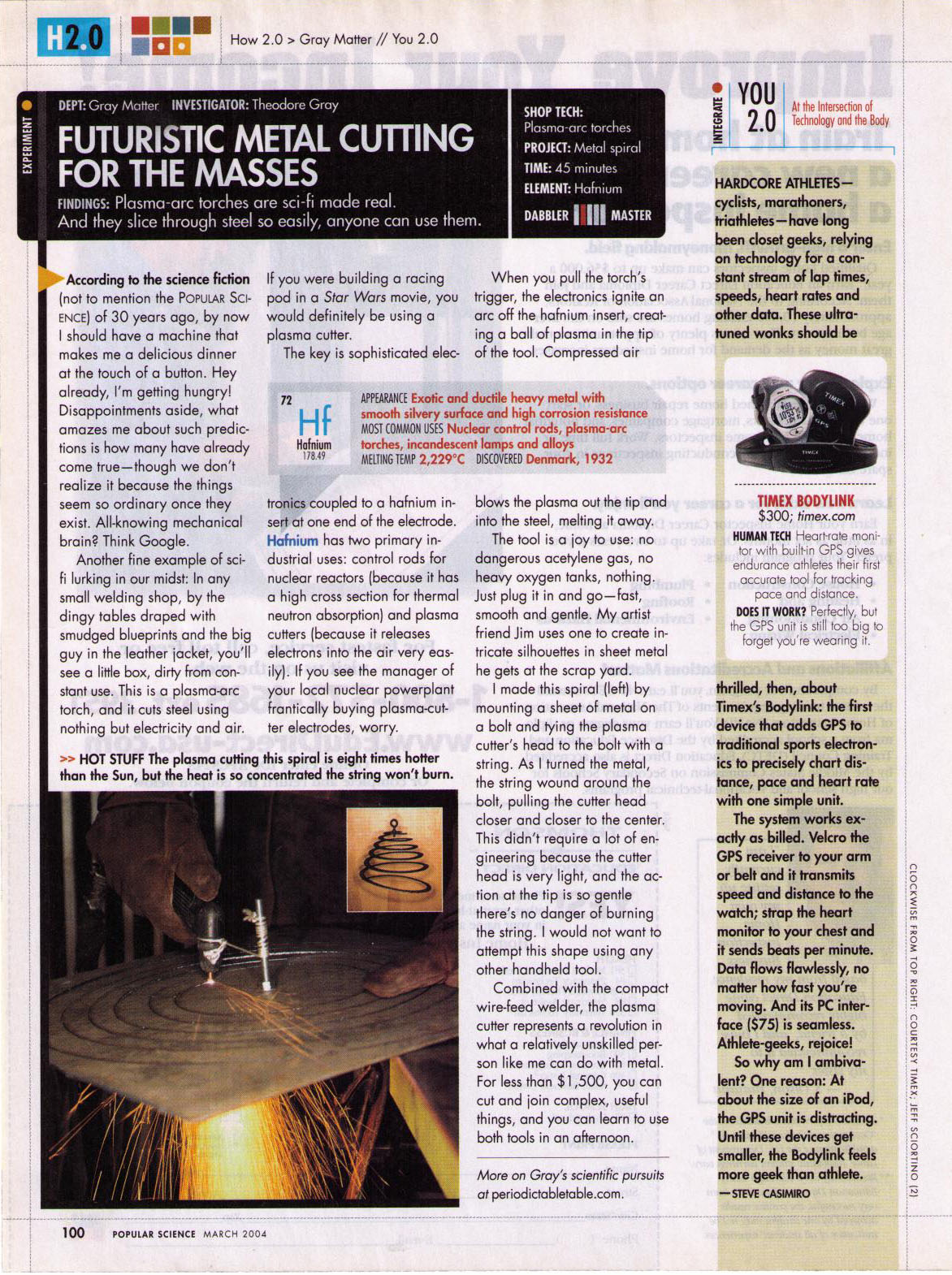According to the science fiction (not to mention the Popular Science) of 30 years ago, by now I should have a machine that makes me a delicious dinner at the touch of a button. Hey already, I'm getting hungry! Disappointments aside, what amazes me about such predictions is how many have already come true -- though we don't realize it because the things seem so ordinary once they exist. All-knowing mechanical brain? Think Google.
Another fine example of sci-fi lurking in our midst: In any small welding shop, by the dingy tables draped with smudged blueprints and the big guy in the leather jacket, you'll see a little box, dirty from constant use. This is a plasma-arc torch, and it cuts steel using nothing but electricity and air. If you were building a racing pod in a Star Wars movie, you would definitely be using a plasma cutter.
The key is sophisticated electronics coupled to a hafnium insert at one end of the electrode. Hafnium has two primary industrial uses: control rods for nuclear reactors (because it has a high cross section for thermal neutron absorption) and plasma cutters (because it releases electrons into the air very easily). If you see the manager of your local nuclear powerplant frantically buying plasma-cutter electrodes, worry.
When you pull the torch's trigger, the electronics ignite an arc off the hafnium insert, creating a ball of plasma in the tip of the tool. Compressed air blows the plasma out the tip and into the steel, melting it away. The tool is a joy to use: no dangerous acetylene gas, no heavy oxygen tanks, nothing. Just plug it in and go -- fast, smooth and gentle. My artist friend Jim uses one to create intricate silhouettes in sheet metal he gets at the scrap yard.
I made this spiral (left) by mounting a sheet of metal on a bolt and tying the plasma cutter's head to the bolt with a string. As I turned the metal, the string wound around the bolt, pulling the cutter head closer and closer to the center. This didn't require a lot of engineering because the cutter head is very light, and the action at the tip is so gentle there's no danger of burning the string. I would not want to attempt this shape using any other handheld tool. Combined with the compact wire-feed welder, the plasma cutter represents a revolution in what a relatively unskilled person like me can do with metal. For less than $1,500, you can cut and join complex, useful things, and you can learn to use both tools in an afternoon. |
|

